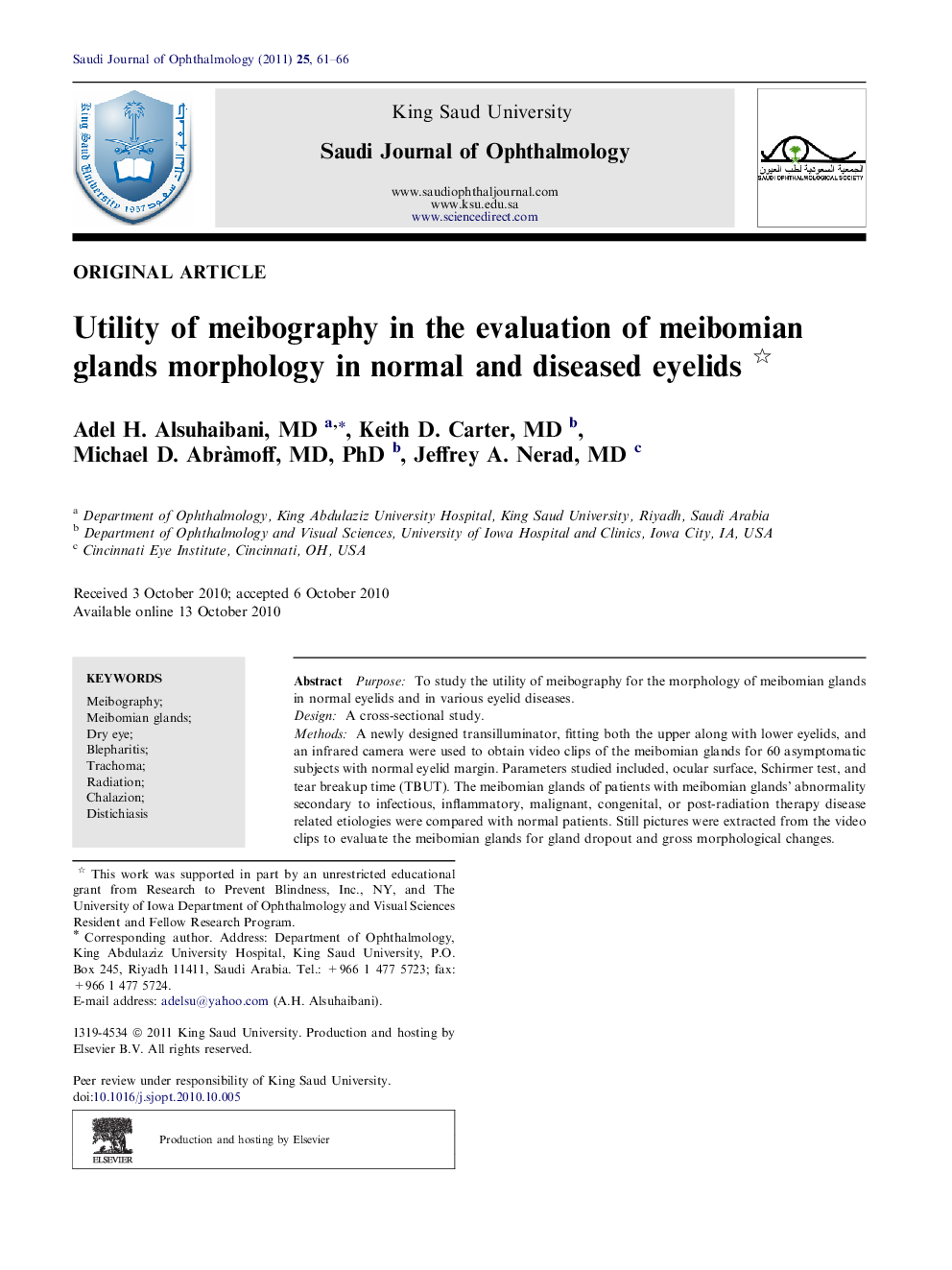| Article ID | Journal | Published Year | Pages | File Type |
|---|---|---|---|---|
| 2704480 | Saudi Journal of Ophthalmology | 2011 | 6 Pages |
PurposeTo study the utility of meibography for the morphology of meibomian glands in normal eyelids and in various eyelid diseases.DesignA cross-sectional study.MethodsA newly designed transilluminator, fitting both the upper along with lower eyelids, and an infrared camera were used to obtain video clips of the meibomian glands for 60 asymptomatic subjects with normal eyelid margin. Parameters studied included, ocular surface, Schirmer test, and tear breakup time (TBUT). The meibomian glands of patients with meibomian glands’ abnormality secondary to infectious, inflammatory, malignant, congenital, or post-radiation therapy disease related etiologies were compared with normal patients. Still pictures were extracted from the video clips to evaluate the meibomian glands for gland dropout and gross morphological changes.ResultsIn normal subjects, meibomian glands appeared to be thinner and longer in the upper eye lids than in the lower eye lids. Gland dropout occured with increased age, more in the lower eye lid and in females. Excessive gland drop out (> 75%) was seen in patients with history of trachoma, Stevens Johnson syndrome, severe blepharitis, and post-radiation for orbital tumors. Variable gland drop out was noticed in patients with floppy eyelid syndrome, and blepharitis. In patients with congenital distichiasis, partial or complete gland drop out at the part of the eyelid margins affected by distichiasis was noticed.ConclusionsThe newly designed transilluminator permitted the examination of both upper and lower eye lid meibomian glands with minimal discomfort. Evaluating the anatomical changes involving meibomian glands with meibography may help increase our understanding of the meibomian gland-related diseases, monitor the effects of treatment, and provide helpful information for patient education.
